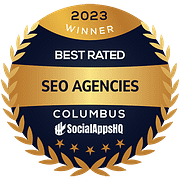Written by Joe Jorgenson, President
Over the past several years, Google has shifted its focus to the ongoing activity and engagement level of businesses, and their websites, to help determine rankings. The efforts a business takes to improve its position without engaging in paid advertising, or Pay-Per-Click campaigns, is referred to as Organic Search Engine Optimization. The most common efforts include:
- Launching a Blog and implementing an aggressive approach to producing new blog content.
- Producing case studies, white papers or in-depth analysis of services offered by the company.
- Adding multiple well designed, single focus, landing pages with clear calls to action.
- Keywords and Meta tags count for less than they once did, but they still matter.
- Tracking your visitors beyond the monthly hit count. Where did they come from? What did they search for when they came to us? What page did they leave from? Was there a conversion?
- A link building strategy can take time to implement, but is effective.
- Social Media is a necessary evil in today’s competitive business environment.
- Mobile responsive web designs or retrofits make the site better for mobile users and will be rewarded in searches performed on mobile devices, which is more than 50% on Google.
 Most of the effective Organic SEO work has to do with ongoing activity. Putting programs in place that require content contributions for all levels of your organization spreads the work around and allow for a better engagement across disciplines. Sharing the results of keyword research will help inform those contributors as to the company’s digital marketing objectives, the competitive landscape and will help to improve the content’s effectiveness. Too often a variation of a phrase will get searched for many multiples more frequently than another. Knowing this from the beginning will help those authors use the most effective phrasing.
Most of the effective Organic SEO work has to do with ongoing activity. Putting programs in place that require content contributions for all levels of your organization spreads the work around and allow for a better engagement across disciplines. Sharing the results of keyword research will help inform those contributors as to the company’s digital marketing objectives, the competitive landscape and will help to improve the content’s effectiveness. Too often a variation of a phrase will get searched for many multiples more frequently than another. Knowing this from the beginning will help those authors use the most effective phrasing.
The same content can be summarized, linked to and referenced on social media to provide quality content consistently. Social media allows for a more relaxed tone. Quality engagement can come from all types of posts, including the simple Friday Funny, sharing a local sports team’s post or wishing everyone a safe holiday weekend can get as many likes or shares as a well-prepared article.
If Organic SEO is tied to the level of engagement and activity, why is a website redesign a recommended addition to most plans? Why do clothing stores spend so much time staging their products? The consumers have already driven to the store, parked and walked in. Why spend so much time and money month after month to make the store look beautiful? The answer is to increase the level of engagement with the consumer, to increase the conversion rate and to sell each person more each time we interact with them.
Some of the specific benefits of a redesign are:
- Consumers feel high quality, modern websites reflect that the company is more trustworthy, more stable and that the interaction on the website will be more secure.
- A redesign can afford the opportunity to place contact forms on every page, without looking forced.
- Anchors to blog content can be placed on relative pages allowing for an automated way to update content throughout the site. The homepage shows the three most recent blog articles. A particular service page could show the three most recent blog posts pertaining to that service. Post one blog and update 5 pages by hitting save.
- The cost of retrofitting a site to be mobile responsive or to include common conversion tools can often cost as much as rebuilding the site from scratch.
- If updating content on your site frequently is something Google rewards, a redesign will see every page on your website updated at once.
 There’s no silver bullet. There’s no one answer and the person who emailed promising to get you to number one on Google is either lying or is selling Pay-Per-Click. The most effective solution is to have the best website and to publish the best content, period.
There’s no silver bullet. There’s no one answer and the person who emailed promising to get you to number one on Google is either lying or is selling Pay-Per-Click. The most effective solution is to have the best website and to publish the best content, period.
Start with a plan for how to manage the ongoing content generation, social media interaction and research into how your current site has served. From there, look at competitor’s websites and similar businesses from other markets to see how they’ve structured their site. Look at other websites for businesses who serve the same people you’re trying to reach. Take the best pieces from each, come up with a design that reflects well on your brand, then build a new website!
But remember, the best race car in the world won’t win anything unless you put gas in the tank and drive it.








